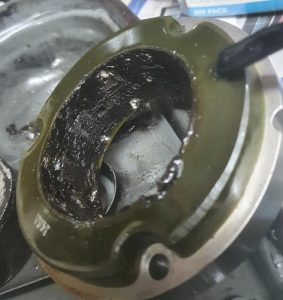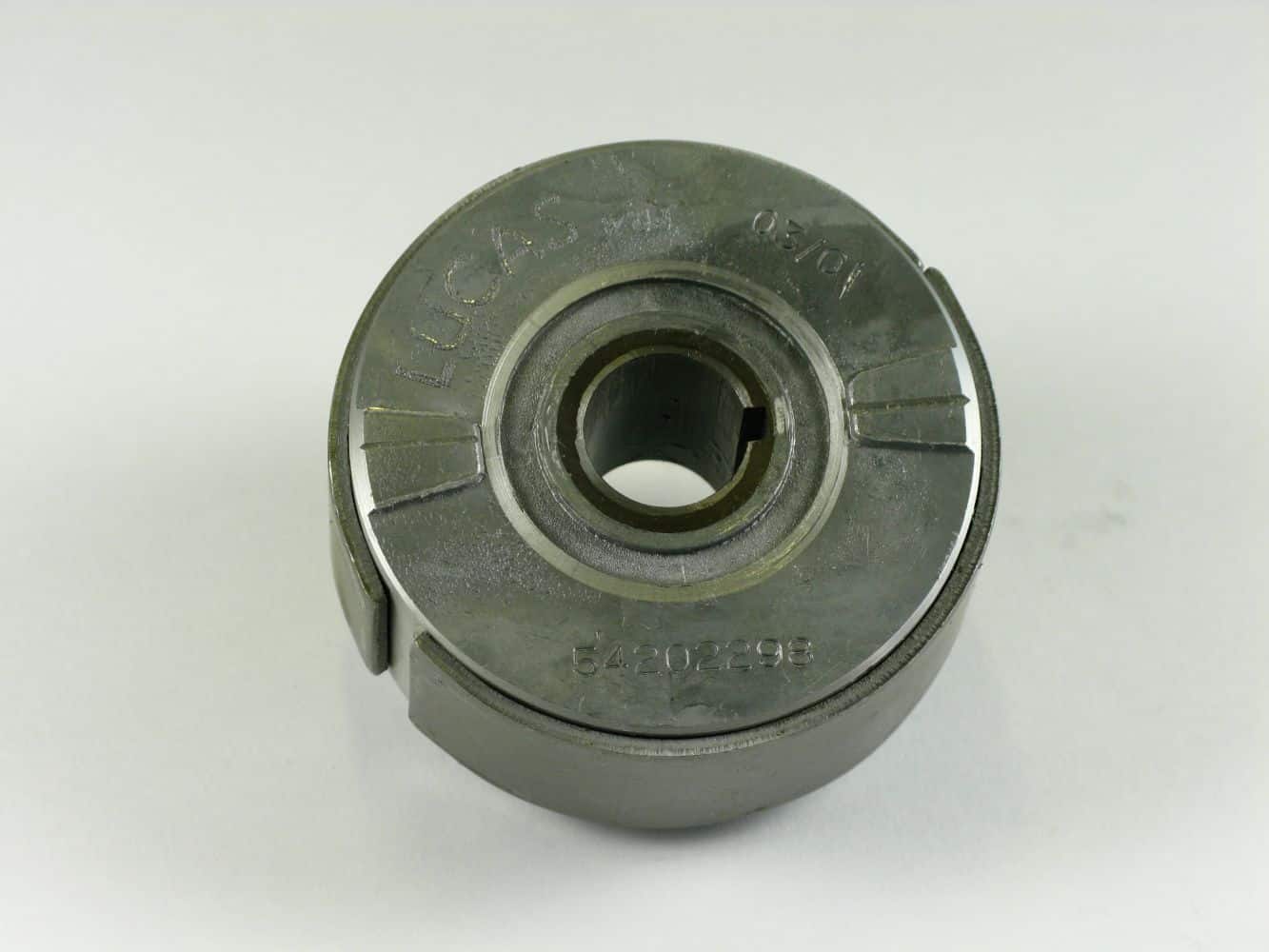Importance of Checking Alternator Rotor Clearance
Although not an everyday occurrence, having the rotor rubbing on the stator can lead to very expensive problems. Very few of us know the full history of the machines we ride, and they could have been in an accident the left the rotor rubbing, or dangerously close to the stator.
There has been a misconception, often heard on the internet, that if you wrap the rotor in a sheet of plastic you will be sure that the stator is centered over the rotor. Nothing could be farther than the truth.
If you don’t rotate the engine stopping every 60° or so, to check the stator clearance around 360° of its periphery, you haven’t done your job.
There can be many reasons why the crankshaft is bent leaving the rotor running eccentric. It is not uncommon in an accident, where the front of the primary cover is hit, to have the impact bend both of the two front stator studs. Depending upon the force of impact, the stator studs can drive the stator against the rotor and bend the crankshaft.
This can be as little as a few thousandths of an inch, or if it was a particularly heavy hit, it can be a lot more. If the parts are severely bent the problem will be obvious. It is when there is slight damage that you will most likely get into trouble.
It is also possible to damage the stator studs, and bend the crankshaft, if the crankshaft was in a bike that broke a primary chain. So far what ever reason you must include rotating the motor when checking rotor/stator clearance.
Owners of non-unit Triumphs and Nortons need to be particularly vigilant when checking the rotor clearances. Being mounted to the inner primary cover offers just another possibility to have a problem.
On Triumph Tiger Cub be sure to check that the rotor is centered on the studs. In some cases reducer sleeves are required to adapt down the stator holes from 5/16 to 1/4 inch. The procedure for checking the rotor clearance on the Cub is a little different due to the stator field being mounted to the primary cover. Take masking tape and wrap the rotor once before you install the primary cover and mounted stator. Tighten the cover screws and kick the bike over a few times. Now remove the primary cover to see if the tape has any scuff marks. If there are marks adjust the stator mounting and renew the rotor masking tape. Preform the test again till you get not marks on the tape
To save an expensive failure, or personal injury, take the extra time to rotate the engine when checking for clearance. It only takes a minute more and could save you a lot of trouble later!
Note using no ferrous feeler gauges (plastic, brass, stainless steel) is preferred.
Minimum clearance must be .008″ inch measured at 3 points opposite each other. Rotate the crankshaft 1/3 revolution and check the clearance again. Repeat the process once more. It is extremely important that there be clearance at all points. If the rotor rubs the stator even for a short time the rotor will be demagnetized.
FAILURE TO PERFORM THIS STEP COULD RESULT IN INJURY OR DEATH DUE TO CATASTROPHIC FAILURE OF THE COMPONENTS RESULTING IN LOSS OF CONTROL OF THE MOTORCYCLE.

